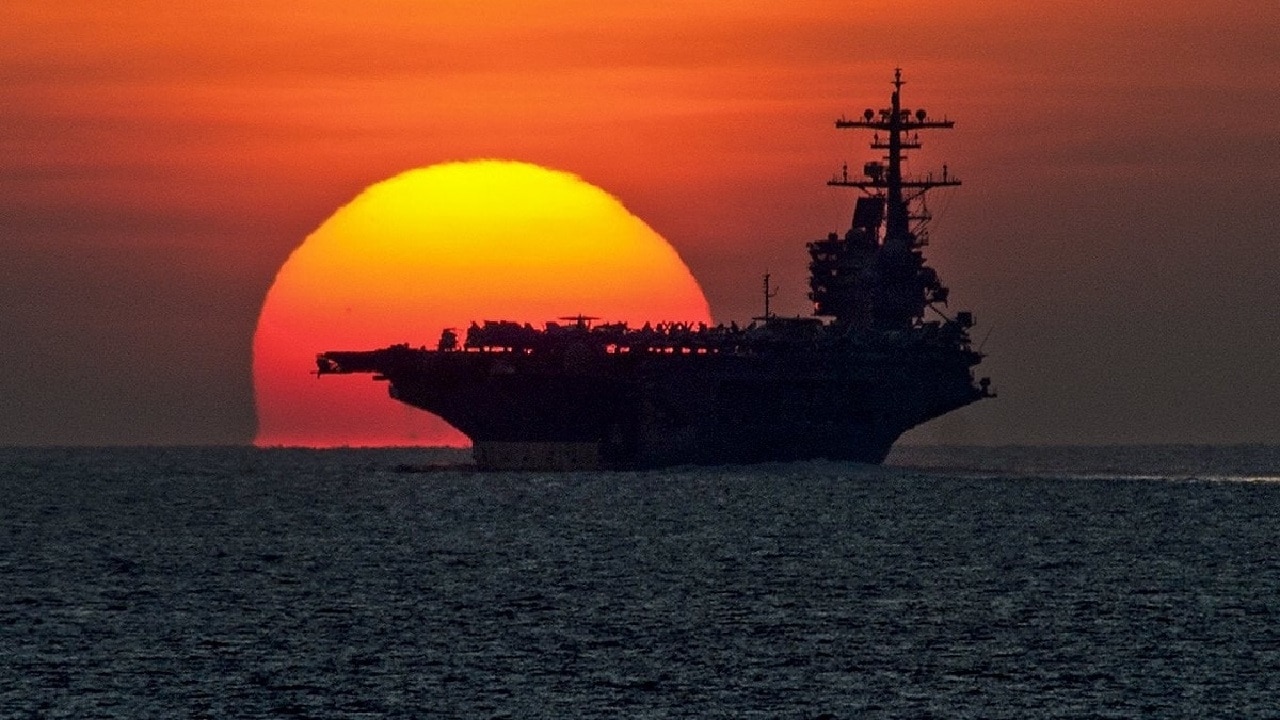Earlier this month, the United States Navy’s Nimitz Carrier Strike Group (NIMCSG) began operations in the South China Sea – the first during the group’s 2022-2023 deployment.
While in the neutral waters, the strike group conducted maritime strike training, anti-submarine operation, integrated multi-domain and joint training between surface and air elements, and flight operations with fixed and rotary wing aircraft.
The U.S. Navy Is Back in the South China
NIMCSG completed its port visit to the Republic of Singapore last week and returned to the South China Sea.
The nuclear-powered aircraft carrier USS Nimitz (CVN-68) and the Arleigh Burke-class guided-missile destroyers USS Decatur (DDG-73), USS Chung-Hoon (DDG-93), and USS Wayne E. Meyer (DDG-108) had arrived in the island nation on January 21, a day before the Chinese New Year period – known as the Spring Festival.
China’s People’s Liberation Army Navy (PLAN) generally conducts less intensive operations during the time, similar to western navies during the Christmas holiday period, USNI News reported.
“We are very thankful to the people of Singapore for welcoming us this past week, and consider ourselves very fortunate whenever we get the opportunity to visit this wonderful country,” said Rear Adm. Christopher Sweeney, commander, Carrier Strike Group 11. “The U.S. Navy and Nimitz Carrier Strike Group is stronger and better prepared when we work alongside our Allies and partners to promote security and stability across the Indo-Pacific region.”
The carrier strike group is now back in the South China Sea, and ready to address any threats in the region.
“The Nimitz Carrier Strike Group has the capability to deliver integrated lethal and non-lethal effects from space to undersea, across every axis, and every domain,” Sweeney explained earlier this month. “Our Sailors’ tenacity and warfighting prowess are unmatched and a testimony to our country’s determination to work alongside our Allies and partners to maintain free and open seas.”
The admiral also told the Reuters News Agency that this deployment to was part of a U.S. commitment to uphold freedom of passage in the waters and airspace of a region that is vital to global trade.
Sea routes through the South China Sea carried more than $5 trillion worth of trade in 2021, including Middle East energy to the Far East. More than 30 percent of global maritime crude oil – roughly 15 million barrels per day (b/d) pass through the South China Sea in 2016, and that number has only steadily increased due to China’s demand for oil.
The presence of U.S. warships in the region has been welcomed by regional allies including Japan, South Korea, the Philippines, and Australia, but it also continues to be a bane to Beijing, which sees such exercises as provocations. China claims historic jurisdiction over nearly the entirety of the South China Sea, including the exclusive economic zones (EEZs) of several nations including Vietnam, Malaysia, Brunei, and the Philippines.
“We are going to sail, fly and operate wherever international norms and rules allow. We’re going to do that safely and we’re going to be resolute about that,” Sweeney told Reuters on Friday.
“It’s really just about sailing and operating obviously with our allies and partners in the area and assuring them of free and open commerce and trade in the Indo-Pacific.
Final Nimitz Deployments
CVN-68 departed from San Diego on December 3, 2022 – her first deployment since the height of the Covid-19 pandemic, which lasted eight months and 28 days, while the crew was away from home for eleven months and seven days.
Following the 2012 inactivation and 2017 decommissioning of USS Enterprise (CVN-65), the first nuclear-powered aircraft carrier, the USS Nimitz became the oldest United States Navy aircraft carrier in service and the oldest serving aircraft carrier in the world. The Navy has planned to remove the warship from the battle force in fiscal year (FY) 2026 when the ship’s Terminal Off-load Program begins.
MORE: Why Putin Fears the M1 Abrams Tank
MORE: I Went to War in the Leopard 2 Tank Ukraine Wants
MORE: World War III – Where Could It Start?
MORE: A U.S.-China War Over Taiwan Would Be Bloody
Author Experience and Expertise: A Senior Editor for 19FortyFive, Peter Suciu is a Michigan-based writer. He has contributed to more than four dozen magazines, newspapers, and websites with over 3,200 published pieces over a twenty-year career in journalism. He regularly writes about military hardware, firearms history, cybersecurity, politics, and international affairs. Peter is also a Contributing Writer for Forbes and Clearance Jobs. You can follow him on Twitter: @PeterSuciu.

